Resistance in motion: what you need to know about variable resistors
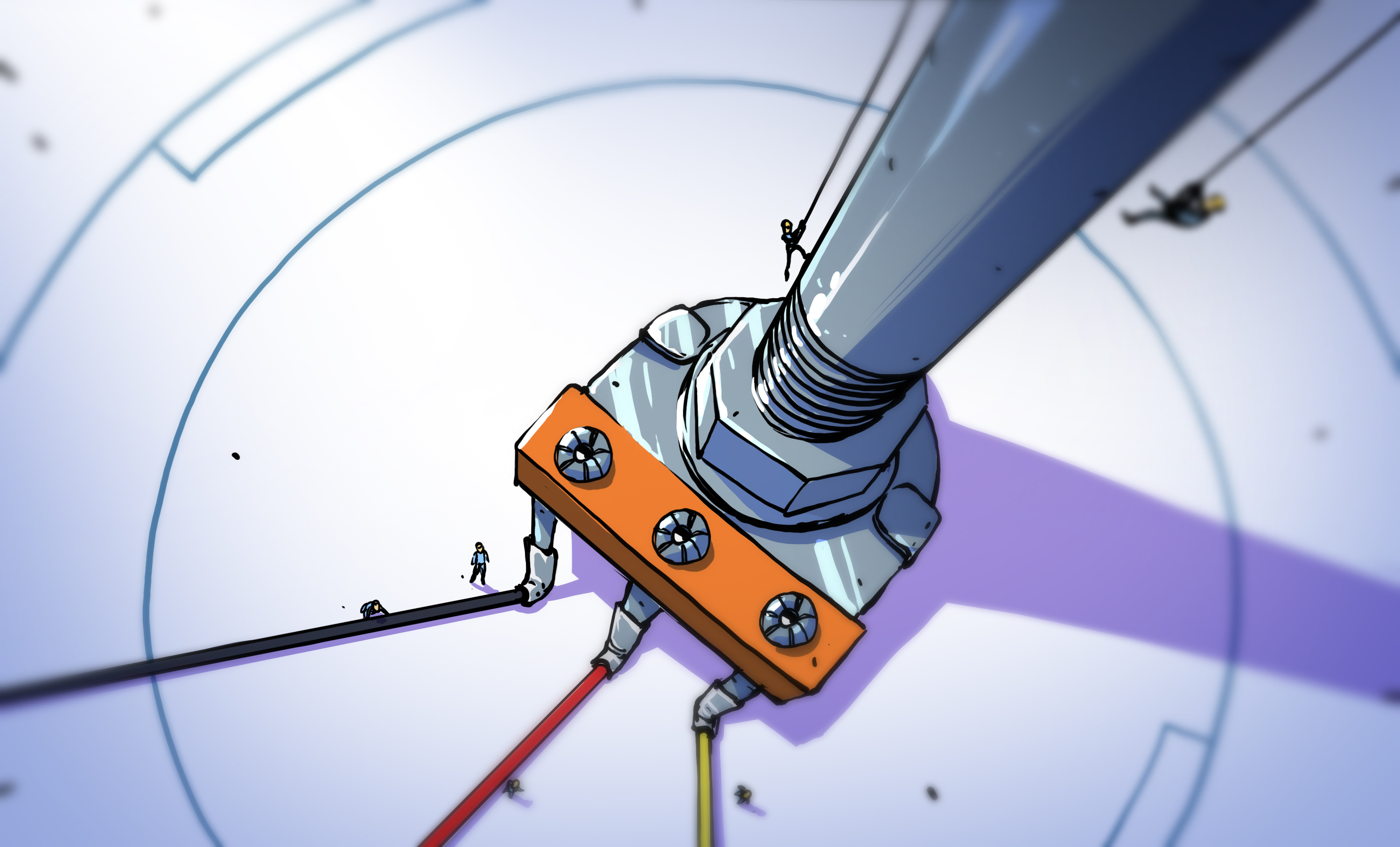
Adjusting the volume of the sound system, fixing the position of a finger on the touch screen and determining the appearance of a person in a car are just a few examples of using variable resistors in everyday life. The ability to change resistance is the ability to interact, so variable resistors can be found in many things. (Everything you need to know about fixed resistors is described in the previous article .)
The principles are the same, but there are quite a few ways to separate the voltage. Consider what lies at the basis of vernier, rheostats, membrane potentiometers, resistive touch screens, as well as bending and tension sensors.
Potentiometer
Potentiometers are essentially voltage dividers. This is a method of dividing a given voltage into smaller values. According to the diagram, the potentiometer (gray) has three connection points. Medium is a variable (indicated by an arrow), and it is in contact with a resistor material inside somewhere in one of the points of an extended resistor.
')
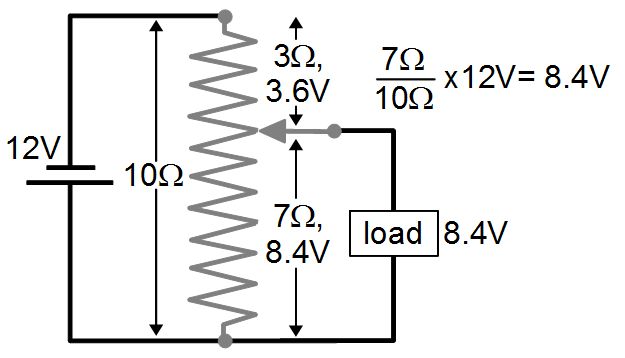

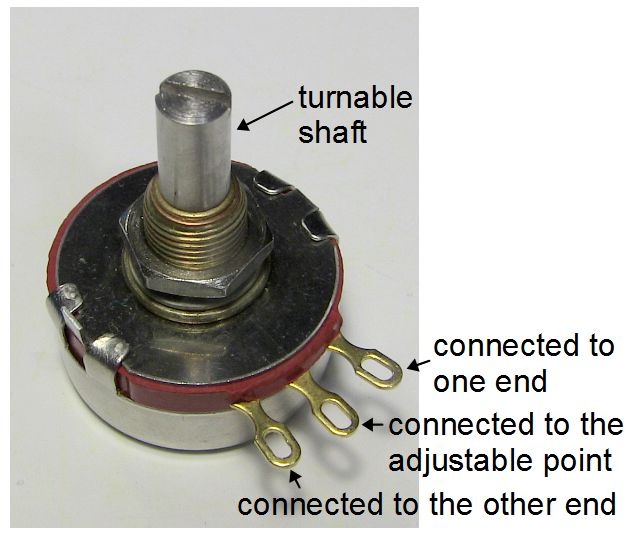
The voltage between the adjustable point and one of the remaining (ends of the resistor) is determined by the resistance between them. If only two points are connected, then we will have a variable resistor, or rheostat.
In the photo - a potentiometer with a cylindrical rotary knob. A round plastic volume knob on your sound system hides one of these potentiometers. Note the three contacts, of which the middle is connected to a variable point. The photo shows a new potentiometer. But an article about how I used such a device on an amplifier made from a peanut butter jar.
How does the resistance of the potentiometer

Potentiometers can have a linear or logarithmic resistance range. Linear means that when you turn the knob, the resistance changes linearly. If you rotate it by a quarter, the resistance will change by a quarter.
But if this is the case with the volume knob, it will seem to our ears that the volume is growing too fast; This is due to the characteristics of the perception of sounds by the brain. Therefore, for the volume knob, it is better to use a potentiometer whose resistance varies logarithmically. The graph shows how the volume changes when you turn the knob, for both linear and logarithmic potentiometer. Some potentiometers provide only pseudo-logarithmic growth, and they are cheaper than those that give a true logarithm. They consist of two linear parts, occurring at 50% of the rotation. Their work is also reflected in the graph.
Logarithmic behavior is achieved by changing the shape of the resistive element - its width varies along the entire length. Therefore, potentiometers are often divided into linearly narrowed and logarithmically narrowed.
Another kind of potentiometer - trimmer resistance, or trimmer. They are smaller and are used on electronic boards. Usually they adjust one at a time, or very rarely - only for calibrating the circuit.
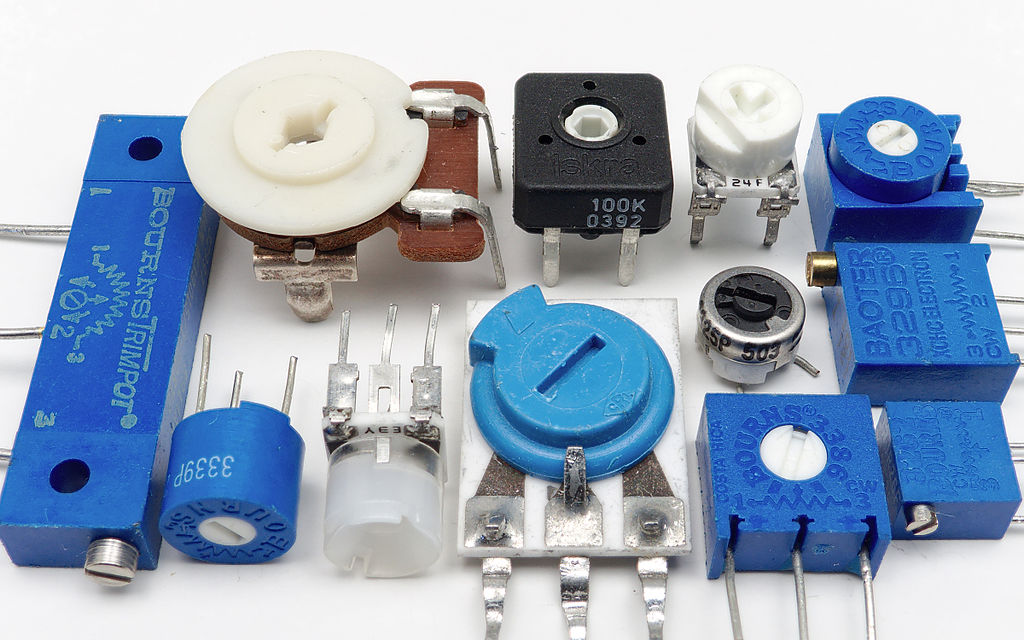
Trimmers
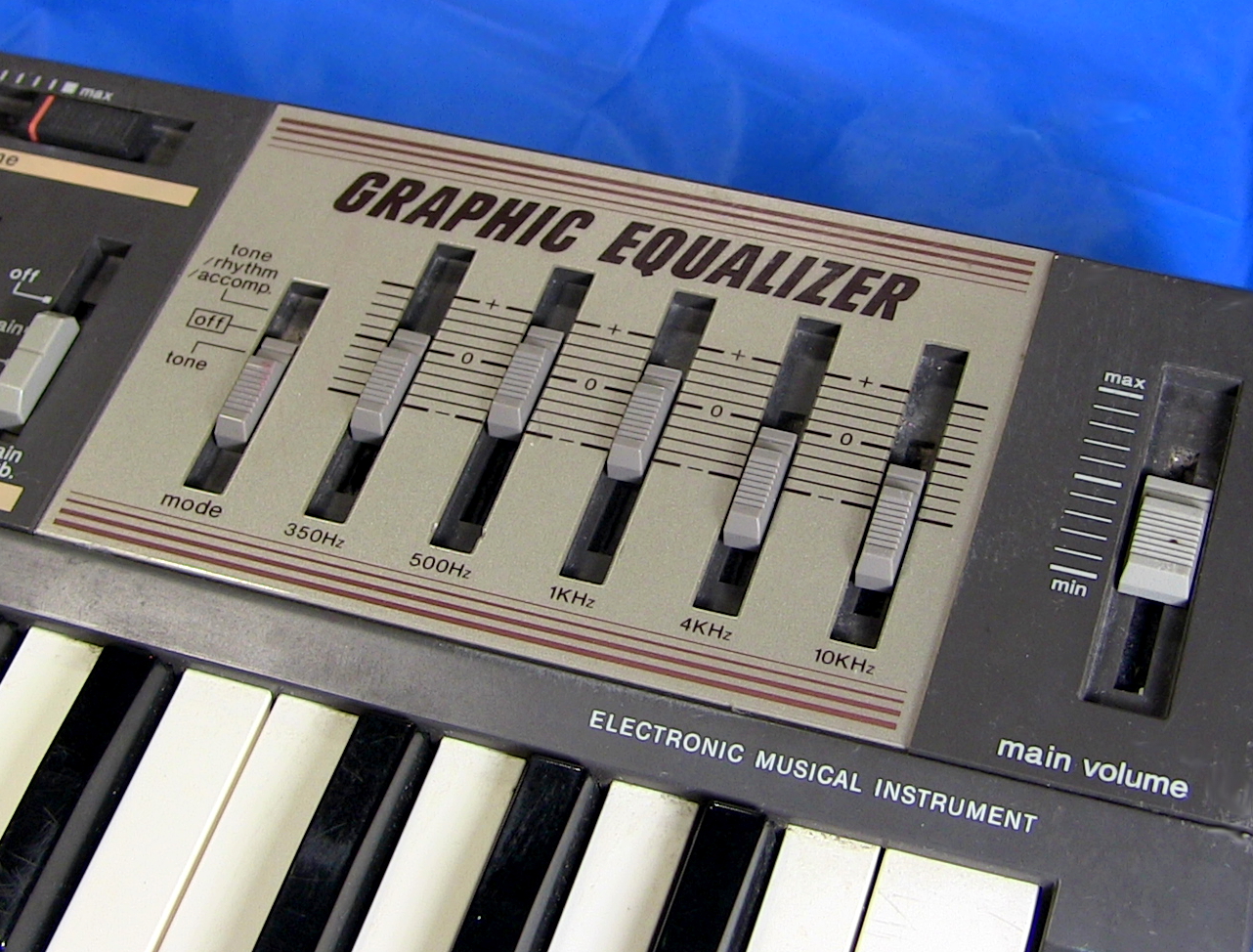
Equalizer
Not all potentiometers work with rotation. They can be made in the form of sliders, as in the photo with an equalizer. Such crawlers are prone to getting into dirt that disrupts their work - this is exactly the problem that appeared on the keyboard in the photo (this is my keyboard, and its crawlers are really difficult to move).
Rheostat
As I already mentioned, when connecting only two contacts, the potentiometer is often called a rheostat. Rheostats are usually used for high currents, and, of course, not only to adjust the volume.
To work with large currents, they are usually made with the help of a wire wound on an insulated core through which the sliding contact goes. Recall the symbol of the potentiometer, which used three contacts. Since here we connect two contacts, we use another symbol; resistance with an arrow (not connected) across. In the image below you can see two versions of this symbol - according to the IEEE and IEC standards.

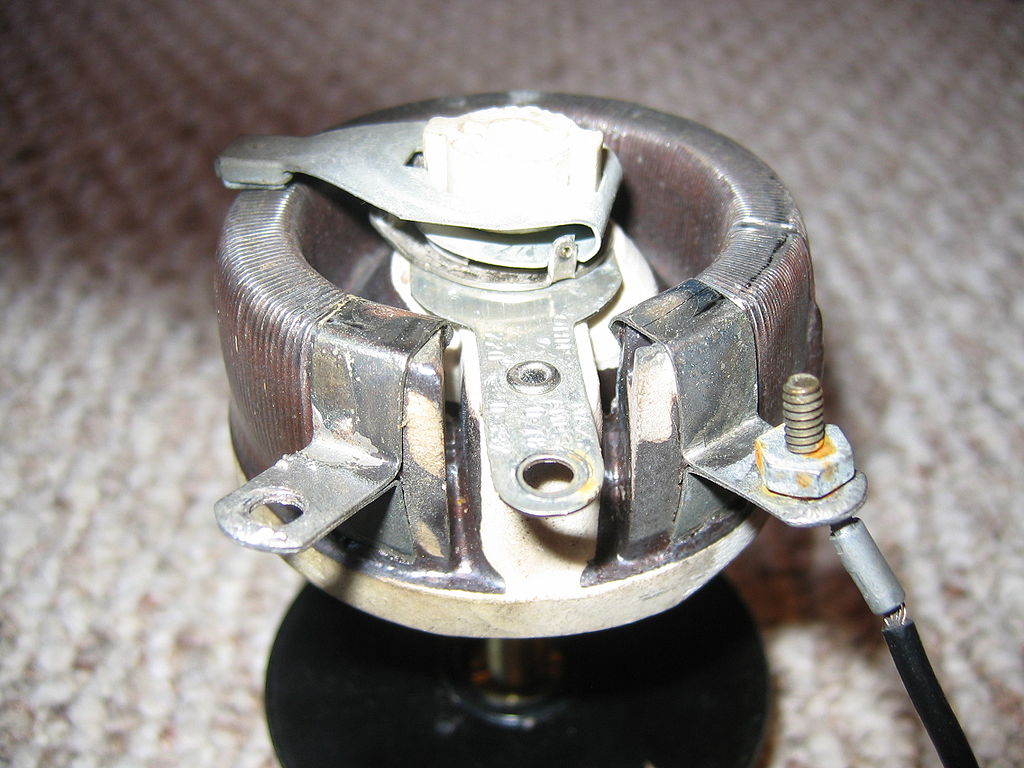
Membrane potentiometer
A membrane potentiometer consists of a flexible dielectric, often transparent membrane with a resistance strip attached on the bottom.
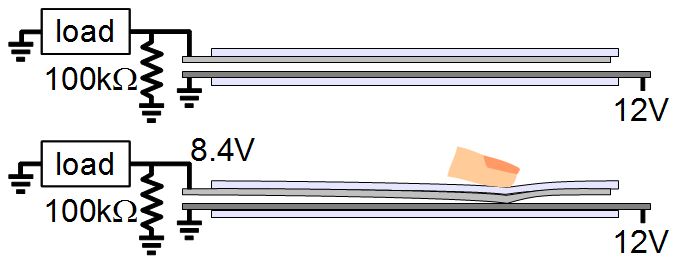
Below it is the base, on the surface of which a conductive path is applied. When a finger or other object touches the membrane, the strip makes contact with the track. As a result, a voltage appears at the contacts of the strip. It depends on where the strip touches the track. The scheme here is the same as the very first scheme on the page for the potentiometer.
The resistance of the SoftPot membrane potentiometer from the Sparkfun site varies linearly from 100 Ω to 10 kΩ with a nominal power of 1 W.
In the case when the contact is not constant (for example, it occurs only when you press it with your finger), a pull-up resistor is necessary in the circuit (for example, 100 kΩ). But some membrane potentiometers have a magnet or sliding contact, always pressing on the membrane and maintaining constant contact.
Resistive touch screen
The resistive touch screen is similar to a membrane potentiometer, only resistive material is on both its layers, and the material is transparent. The front membrane is flexible and also transparent, so that a finger or stylus can press down on it and make contact. The technology has been used in some cheap handheld computers or children's toys. It is still in use, but the smartphone revolution took place thanks to capacitive screens that do not require a flexible membrane.
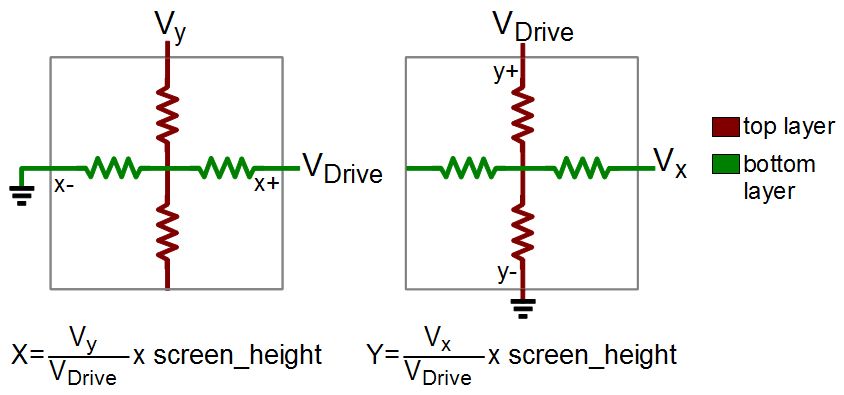
For a 4-wire resistive touch screen, the voltage is applied to the upper layer, and the result is read from the bottom, and thus the X coordinate is read. Then everything happens the other way and the Y coordinate is obtained. All this takes place in milliseconds and the screen is polled continuously.
All calculations are made by an auxiliary controller. Resistive screens are not as responsive as capacitive ones, and a stylus is usually required for high accuracy. Used in very cheap smartphones.
Pressure meter

Pressure sensors consist of conductive polymer, in which there are conductive and non-conductive particles. It is located between two conductors, intertwined, but not connected. Pressing the polymer to the conductors creates a contact. Increasing the force or area of depression increases conductivity and decreases resistance. Without pressing, the resistance of the structure can be more than 1 MΩ, and the accuracy is usually about 10%. This is enough for use in musical instruments, prostheses, sensors of the presence of a person in the car and portable electronics.
Flexible and expandable sensors
A flexible sensor is a resistive material, such as carbon deposited on a flexible membrane. When the sensor is bent, the material stretches and the resistance increases in proportion to the bend radius. Judging by one of the specifications, the resistance of a 10 kΩ flat sensor can double when bent to 180 degrees, when both ends are connected. A common example is the fingers in game gloves, such as in the Nintendo Power Glove controller (in one of the projects it was hacked to control a quadcopter). Bending the fingers leads to a change in resistance, indicating the degree of bending.
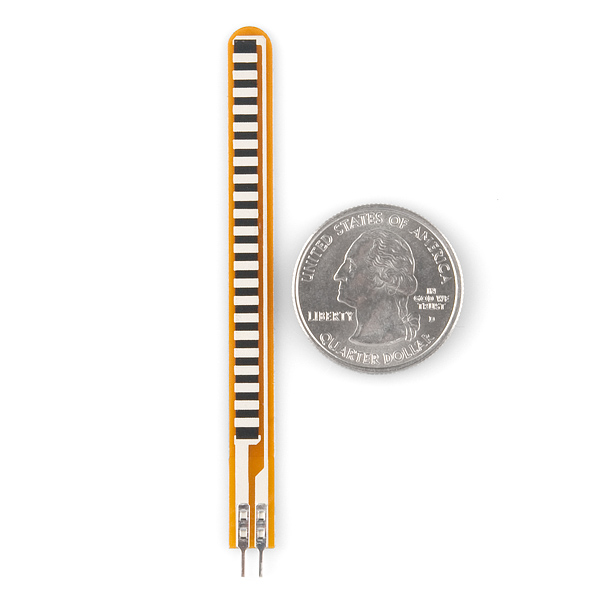

The stretching sensor works according to the same principle, only its resistance increases when stretched. Rubber cord with carbon looks like a bungee cord. Judging by the same example with Adafruit, a 6-inch 2.1 kOhm string under tension up to 10 "changes the resistance to 3.5 kOhm. Another example is a conductive thread of steel fibers blended with polyester, and also gauges in the form of elastic bands or belts.
Source: https://habr.com/ru/post/397953/
All Articles